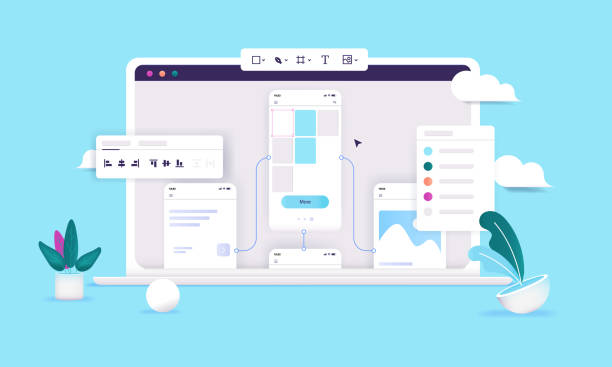
Figma is a web-based tool that is used to develop and edit vector graphics, and it allows for real-time collaboration with other designers. The popularity of Figma is increasing among individuals who design and develop, as it offers various benefits. Figma is an easy-to-use website, and as it is a cloud-based website, users can access their file from any device. It enhances the flow of work and improves collaboration among teams. But some disadvantages can be faced while using Figma, which is why understanding the advantages and disadvantages of Figma is necessary to decide if it's right to use for the project.
Figma is an effective web design tool that offers many advantages, which is why it is preferred by many developers. The advantages of Figma are discussed below.
It allows more than one individual to work on a file at a time, and this feature of Figma makes it effective for collaboration within teams. The changes in the design are implemented quickly, and all teams can stay up to date about the status of work, which makes work more productive.
It offers strong features to designers for prototyping that allow them to create innovative, interactive, and accessible prototypes without any requirements for additional tools. The number of functionalities is present in Figma, including the move in and out animations and different overlays.
Figma offers effective presentation features in which the designers can see the designs in an online viewer and can create links to frames that look like a webpage. It helps users to present ideas at work easily by working out the different styles.
Figma is an intuitive interface, as it is easy to use for the users and is exactly what the user wants it to be. It is for every user who wants to create a design, even without any experience, at a beginner level. It is an easy tool for unlocking the potential for beginner-level designers.
FigJam is an effective feature of Figma; it's an online collaboration tool that is easy for designing work remotely. It is designed as a digital whiteboard that works for brainstorming ideas, planning, and developing workflow charts.
Understanding the disadvantages of Figma is essential because this helps in informed decision-making, and the detailed disadvantages are discussed below.
Figma has a lack of global colours, and it is difficult for users who are working on a global design that requires multiple colours. These colours also help in sharing the colours with others, which helps in keeping track of band colours.
It is not possible to work offline on Figma as it requires cloud collaboration and an unstable connection if the internet disrupts the flow of work, which limits the updates and slows down the real-time collaboration.
The Figma cannot work on projects that have high resolutions and require numerous artboards and large tames, as these can cause delays in the work, which can cause performance issues.
It offers the basic abilities of prototyping and does not offer the advanced ones that are demanded by the developers, which is considered a lack of advanced interactive features of prototyping.
In Figma, the vector-based design tools are used, and if a designer doesn’t know vector-based tools, they find it difficult to learn. It does not offer any other features other than vector-based tools, which makes the learning curve difficult for some users.
Figma is a vector graphic tool for editing and prototyping, and it is highlighted for its feature of providing real-time collaboration with other design teams. It is preferred because the learning curve of this is shorter than other designing tools, and the interface of Figma is clear, which makes it easier to focus fully on work. It is cost-effective for an individual user as it does not require any charges for individual developers and designs. The vector tools of Figma are advanced, and when designing complex work with illustrations, they allow more precision.
In conclusion, Figma is a powerful tool that plays an important role in collaborative designs and developments. It provides an intuitive interface and different features that make it ideal for use by a versatile user. But it also offers some disadvantages, including that it does not provide options for working with unstable internet connections and the absence of global colours. Although it has some limitations, Figma is a valuable tool for web designing, and the use of Figma depends upon the requirements of projects and the preferences of the team.

This post has been authored and published by one of our premium contributors, who are experts in their fields. They bring high-quality, well-researched content that adds significant value to our platform.


